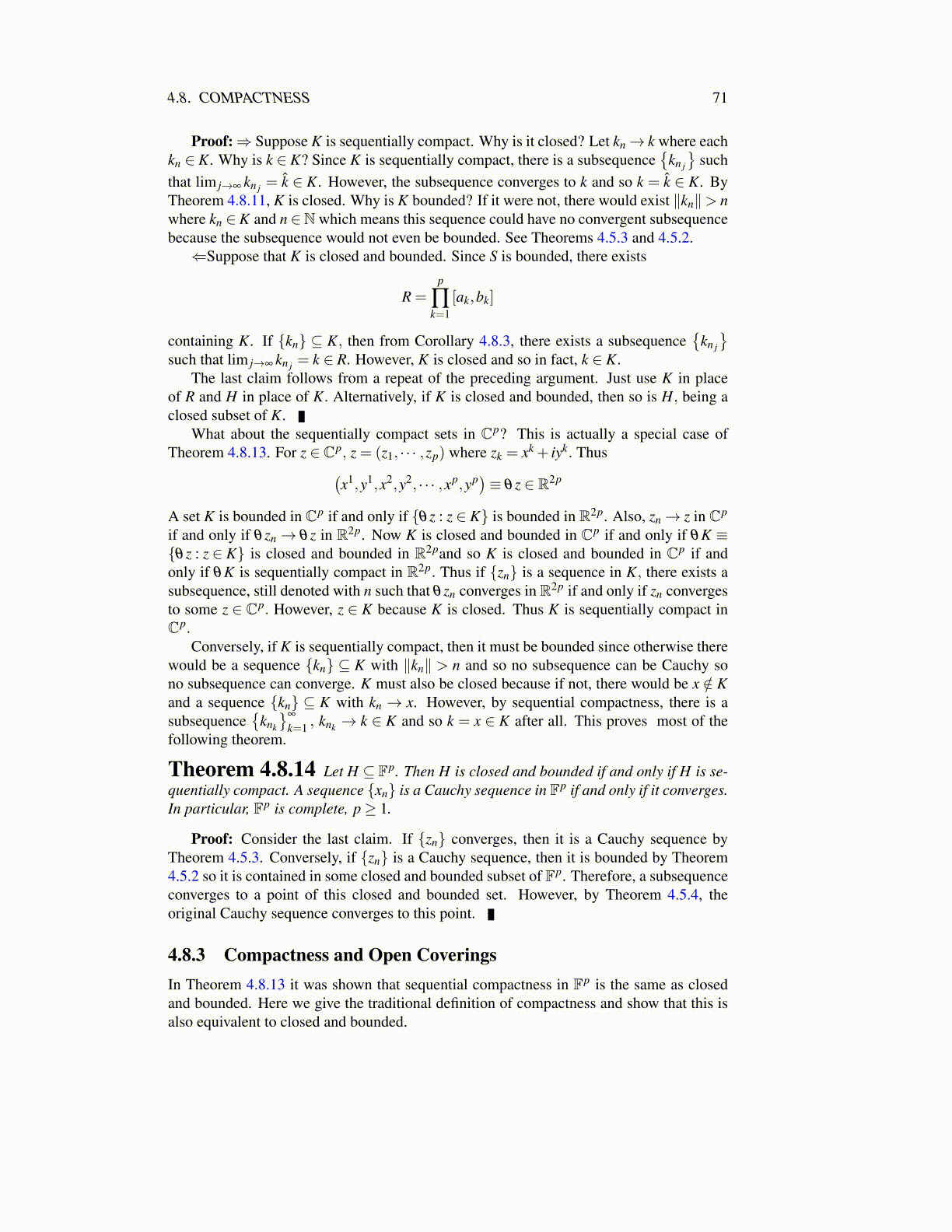
4.9. EXERCISES 71
Theorem 4.8.18 Let B(x,r) denote the interval (x− r,x+ r) . It is the set of allreal numbers y such that y is closer to x than r. Then there are countably many ballsB ≡ {B(x,r) : x ∈Q,r ∈Q∩ (0,∞)}. Also every open set is the union of some collectionof these balls.
Proof: Let U be a nonempty open set and let p ∈U . I need to show that p ∈ B ⊆Ufor some B ∈ B. There exists R > 0 such that p ∈ B(p,R) ⊆ U . Let x ∈ Q such that|p− x| < R
10 . This is possible because Q is dense. Then letting R10 < r < R
5 for r ∈ Q, itfollows that
|p− x|< R10
< r
and so p ∈ B≡ B(x,r) ∈B. Also, if z ∈ B(x,r) , then |z− p| ≤ |z− x|+ |x− p|< r+ r10 <
2R5 < R and so p ∈ B⊆ B(p,R)⊆U showing that U is indeed the union of some subset of
B.When you have a countable set of open sets with the property that every open set is the
union of a subset of this countable set, you call this countable set of open sets a countablebasis. When this happens, you say the set is completely separable. . Thus R along with theusual way of finding distance using the absolute value of the difference of two real numbersis a completely separable set.
Definition 4.8.19 There is also something called the Lindelöf property.4 It saysthat if you have any set of open sets C , then there is a countable subset of C denotedhere as Ĉ such that ∪ Ĉ = ∪C . Thus this property says that every open cover admits acountable subcover.
Theorem 4.8.20 R has the Lindelöf property.
Proof: Let B consist of the open intervals having center a rational number and radius apositive rational number. Then if C is any collection of open sets, let B̂ denote those ballsof B which are contained in some set of C . For each B ∈ B̂, let O(B) be one of the opensets from C which contains B. Then since every open set of C is the union of sets of B, itfollows that
∪C = ∪B̂ ⊆ ∪{
O(B) : B ∈ B̂}⊆ ∪C
So let Ĉ ≡{
O(B) : B ∈ B̂}
. It is a countable set because B̂ is countable, being a count-able subset of a countable set B and the mapping B→ O(B) is onto by definition. Notethat the axiom of choice is used to select O(B) from the set of open sets of C which containB.
This is a very useful observation. It holds whenever you have a countable basis. Obvi-ously much of what is being discussed applies to more general situations.
4.9 Exercises1. Show the intersection of any collection of closed sets is closed and the union of any
collection of open sets is open.
4Lindelöf was a Finnish mathematician who lived from 1870 to 1946. He did important work in complexanalysis.